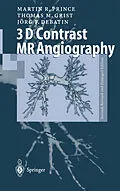Non-invasive, high resolution contrast arteriography without arterial catheterization or nephrotoxicity has become possible using paramagnetic contrast agents and high performance MR imaging systems. The success of this technique is reflected by its rapid integration into clinical practice throughout the world. Three-dimensional (3D)contrast MRA has quickly expanded to encompass virtually all vascular territories using a variety of magnets and imaging strategies. The rapid evolution of this technique is also reflected in the expanded volume of this second edition. Beyond familiarizing the reader with the basic principles underlying 3D Contrast MRA, all relevant technical aspects are addressed, potential pitfalls are identified, and tailored imaging strategies for different vascular regions are described. To widen the scope, the 2nd ed. of 3D Contrast MRA includes invited case studies performed by renowned investigators. The description of imaging techniques have been standardized to facilitate implementation into clinical practice.The glossary of relevant terms and the extensive bibliography has also been expanded.
Klappentext
Non-invasive, high resolution contrast arteriography without arte rial catheterization or nephrotoxicity is now possible. It is accomplished by using paramagnetic contrast and an MR scanner. Paramagnetic contrast media is injected intravenously and image data are collected as the con trast circulates through the vascular territory of interest. Due to the strong enhancement effect of paramagnetic contrast media, a small dose injected as an intravenous bolus is sufficient to briefly enhance the entire arterial vascular tree. This allows imaging with a large field-of-view that encompasses an extensive region of vascular anatomy. By using a 3D gradient echo pulse sequence on magnets with high performance gra dient systems, high resolution 3D volumes of image data are acquired in a single breath-hold. This has vastly improved image quality of 3D con trast MRA exams, particularly in the chest and abdomen. Subsequent post-processing allows an angiographic display of image data in any desired obliquity. The success of this technique is reflected by its incorporation into clinical practice in centers throughout the world. It has been applied to multiple vascular territories, using various magnets, and slightly differ ing imaging strategies. As is the ca se for all MR imaging techniques, a thorough understanding of the underlying mechanisms and proper technique are essential to fully exploit the diagnostic potential of this new form of angiography. This book will familiarize the reader with the basic principles of 3D contrast MRA.
Inhalt
1 Basic Concepts.- 2 Pulmonary MRA.- 3 Thoracic Aorta.- 4 Abdominal Aorta.- 5 Renal Arteries.- 6 Mesenteric Arteries.- 7 Portal Vein.- 8 Peripheral Arteries.- 9 Extracranial Carotid Arteries and Arch Vessels.- 10 3D Contrast MR Venography.- Glossary of Technical Terms.
